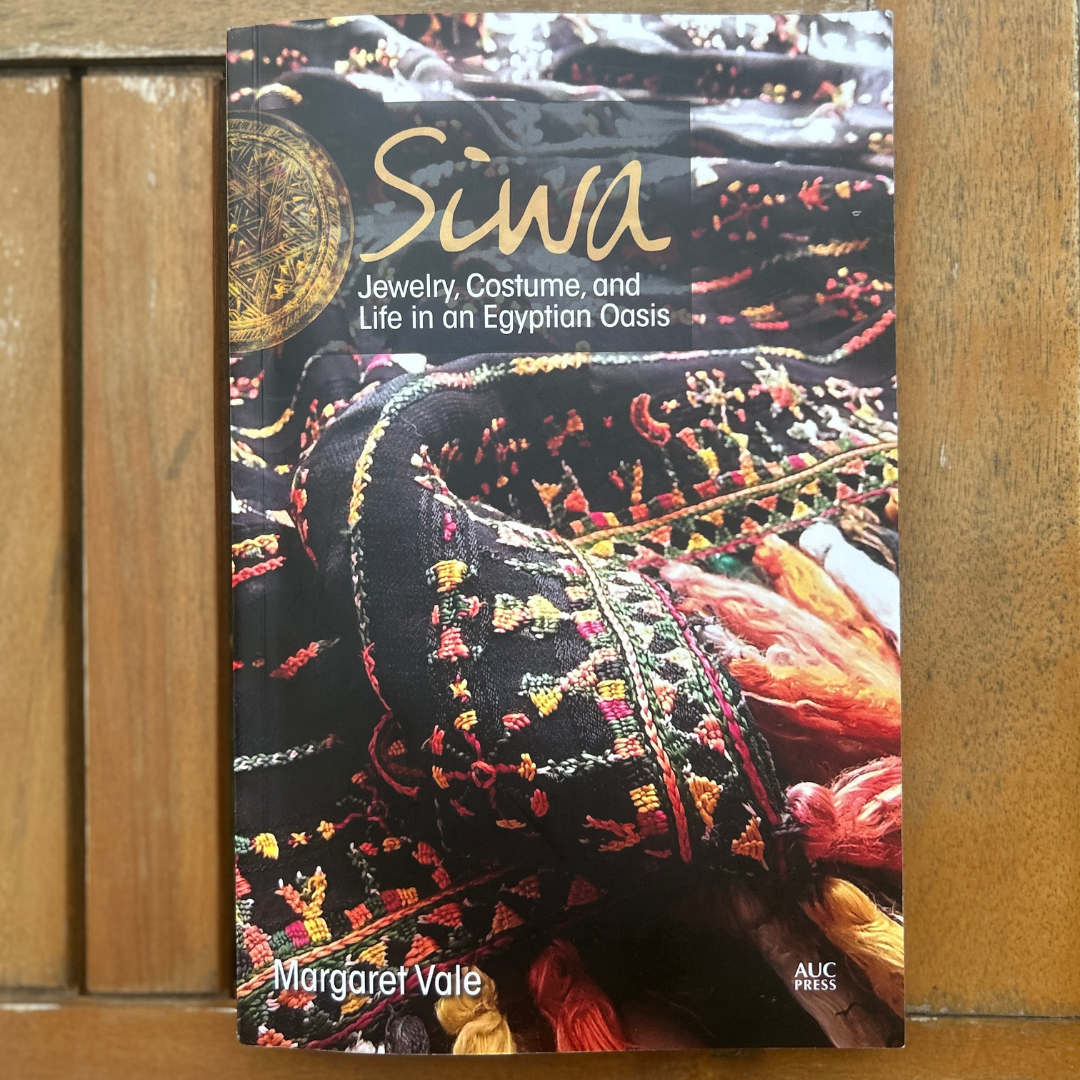Siwa: Jewelry, Costume, and Life in an Egyptian Oasis Book Overview
Margaret Vale's, 'Siwa: Jewelry, Costume, and Life in an Egyptian Oasis,' provides an immersive, enlightening exploration of Siwan culture, concentrating on its distinctive jewelry, costume, and long-standing traditions. In this overview, we will explore key themes and insights from the book, shedding light on how Vale showcases the blend of culture, history, and artistry that is Siwa. 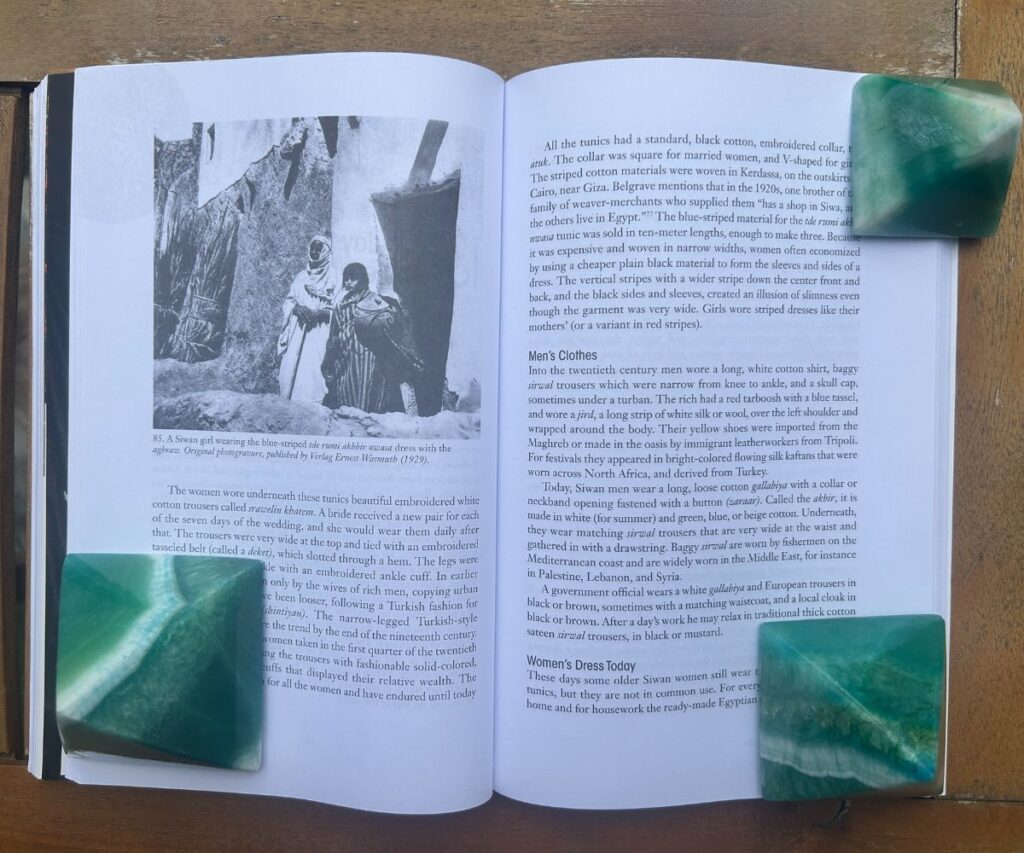 In the introduction, Vale provides context about Siwa, located in the heart of the Egyptian Western Desert, not too far from the Libyan border. Siwa is rich with palm and olive groves and inhabited by people of Berber origin. For centuries, the Oasis had been a rather cut-off part of Egypt, with minimal contact with the outside world through caravans, seasonal labour migration, and its function as a stop on the pilgrimage (Haj) route from Western Africa to Mecca. This seclusion meant that Siwan traditions, arts, and crafts were untouched for many years. A new road, opened in the mid-1980s, made Siwa more accessible, especially for tourists, bringing change to the lifestyle, employment and arts and crafts of the Siwan people.
In the introduction, Vale provides context about Siwa, located in the heart of the Egyptian Western Desert, not too far from the Libyan border. Siwa is rich with palm and olive groves and inhabited by people of Berber origin. For centuries, the Oasis had been a rather cut-off part of Egypt, with minimal contact with the outside world through caravans, seasonal labour migration, and its function as a stop on the pilgrimage (Haj) route from Western Africa to Mecca. This seclusion meant that Siwan traditions, arts, and crafts were untouched for many years. A new road, opened in the mid-1980s, made Siwa more accessible, especially for tourists, bringing change to the lifestyle, employment and arts and crafts of the Siwan people. 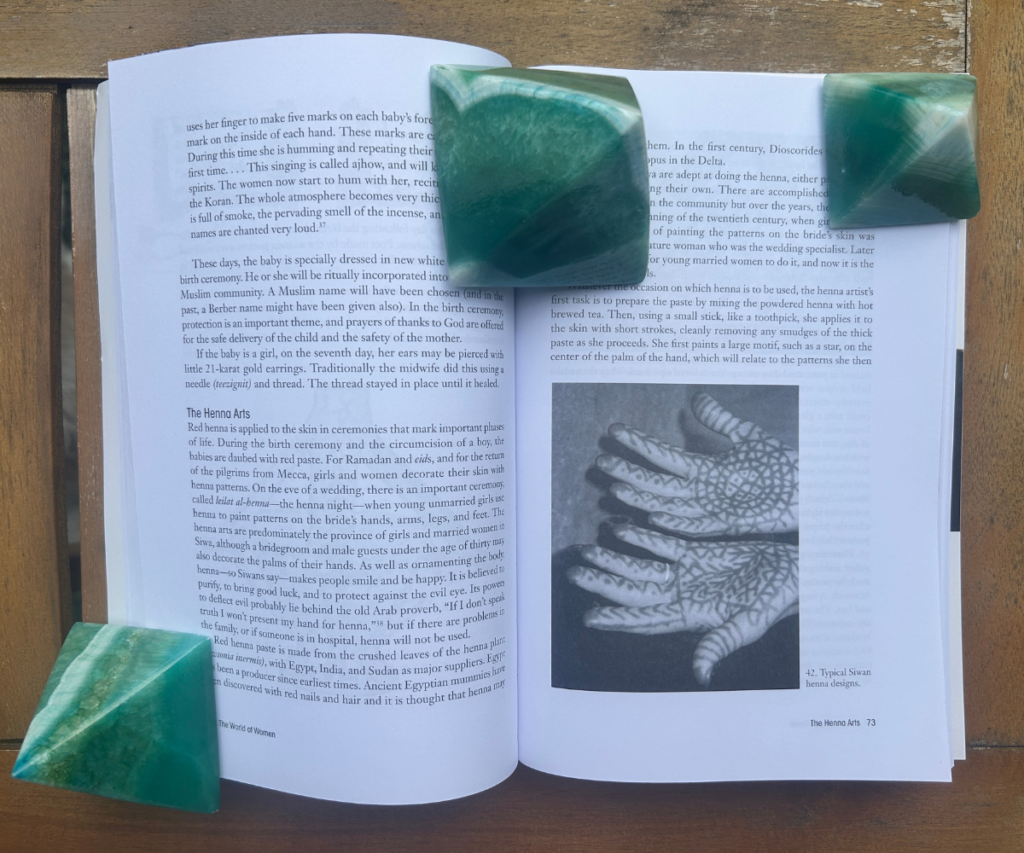 Vale references Alexander the Great referring to the Oasis as Zeus Ammon upon his visit and Ibn Khaldun mentioning the Berber community that lived in the Oasis as well as its palm, olive, and fig trees back in the 14th century. The town, according to Vale, is geographically divided into East and West, with six Eastern tribes and three Western tribes inhabiting it.
Vale references Alexander the Great referring to the Oasis as Zeus Ammon upon his visit and Ibn Khaldun mentioning the Berber community that lived in the Oasis as well as its palm, olive, and fig trees back in the 14th century. The town, according to Vale, is geographically divided into East and West, with six Eastern tribes and three Western tribes inhabiting it. 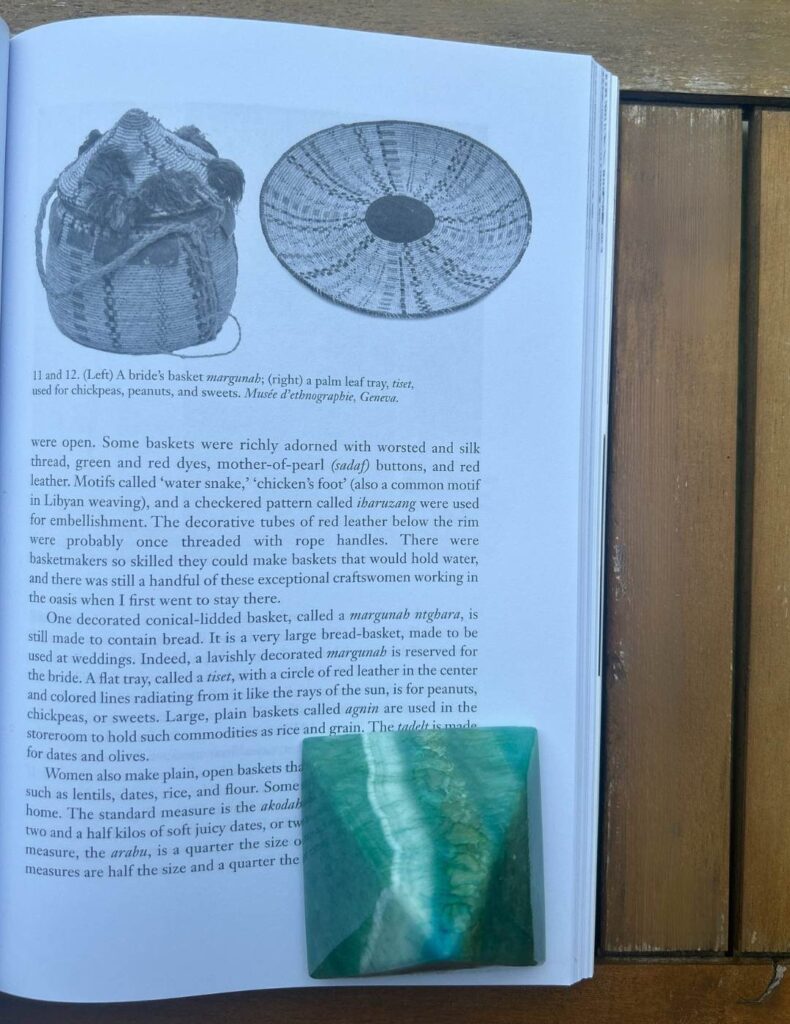 Vale pinpoints Siwa on the map, describing the geography of the Oasis in an 80-km depression, shaped like a pennant. Vale notes that Siwa has had colourful and distinctive crafts, including pottery, baskets, silver jewellery, and embroidery which were traditionally produced for Siwan’s own use. The book also highlights the role of women artisans and creators from henna artists to producing weavers and embroiders.
Vale pinpoints Siwa on the map, describing the geography of the Oasis in an 80-km depression, shaped like a pennant. Vale notes that Siwa has had colourful and distinctive crafts, including pottery, baskets, silver jewellery, and embroidery which were traditionally produced for Siwan’s own use. The book also highlights the role of women artisans and creators from henna artists to producing weavers and embroiders. 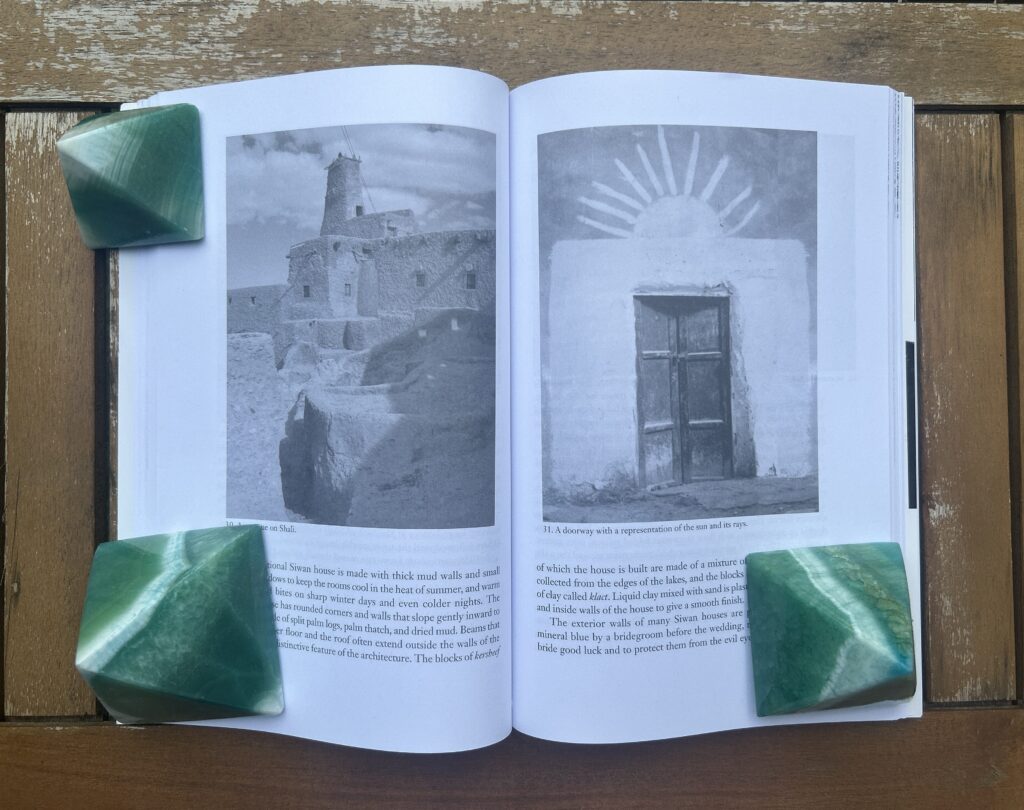 The people of Siwa have used different motifs in their designs that are believed to possess special meanings and even magical qualities at times. Vale dedicated an entire chapter to explore motifs like the Eye, a symbol that has served for millennia as protection against malevolent gazes. The eye can be made from different materials such as stone, glass beads, and cowrie shells which are the most treasured in Siwa. Vale notes that some motifs such as the ‘chicken’s foot’ are also common in Libyan weaving.
The people of Siwa have used different motifs in their designs that are believed to possess special meanings and even magical qualities at times. Vale dedicated an entire chapter to explore motifs like the Eye, a symbol that has served for millennia as protection against malevolent gazes. The eye can be made from different materials such as stone, glass beads, and cowrie shells which are the most treasured in Siwa. Vale notes that some motifs such as the ‘chicken’s foot’ are also common in Libyan weaving. 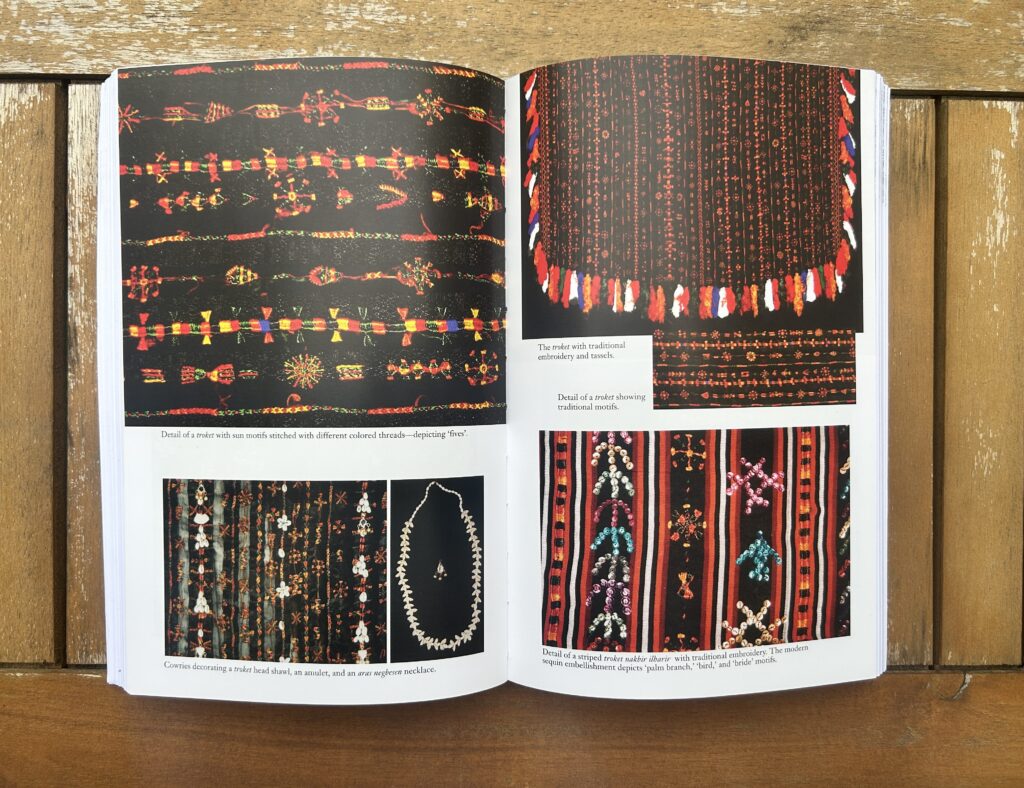 In the first chapter, Vale clarifies that her focus in this book is jewellery, with embroidery, costume and wedding traditions being secondary focus points. As such, this overview will also focus on chapters dedicated to dress and
In the first chapter, Vale clarifies that her focus in this book is jewellery, with embroidery, costume and wedding traditions being secondary focus points. As such, this overview will also focus on chapters dedicated to dress and Structure:
The book provides an overview of North African jewellery and textiles, focusing specifically on the unique characteristics of Siwa. Key chapters include "Motifs and Magic," "The Jewelry of Siwa," and "Wedding Preparations." 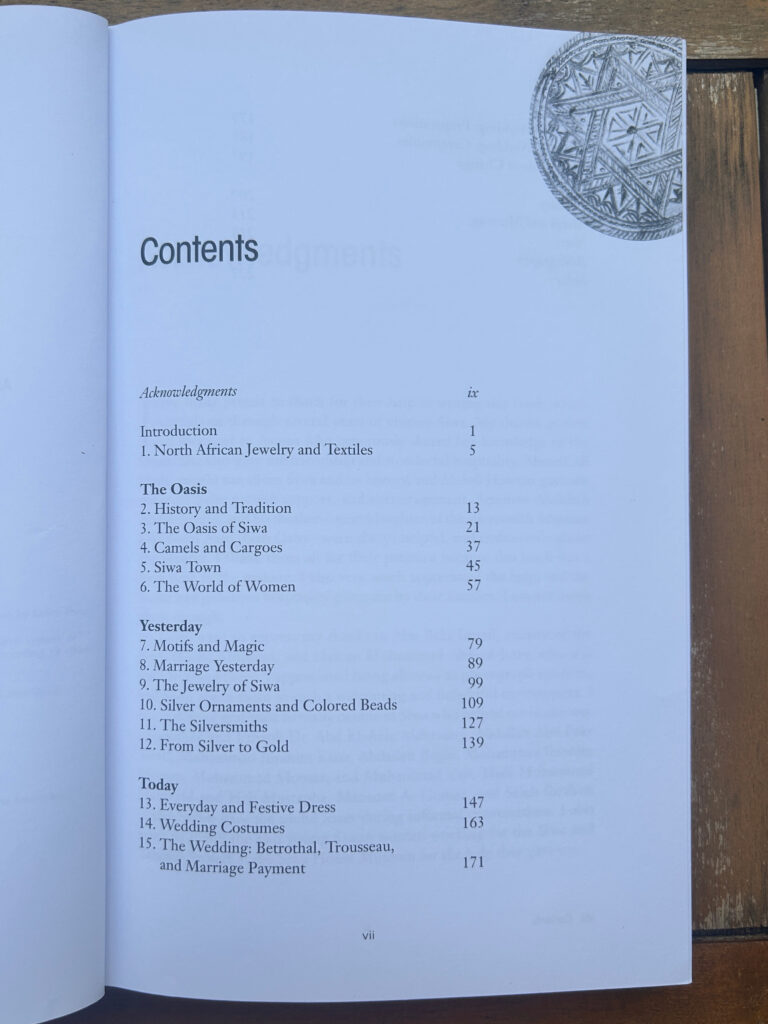
Content highlights:
Prior to documenting Siwa, Vale's travels to Saudi Arabia in the 1970s provided her with a deep understanding of how dress can reflect culture. She learned that the mystery of motifs in embroidery and jewellery could only be unlocked by understanding the social backgrounds and traditions of the women who wore them. The notion is reflected as one of the Zay
Zay: (Arabic: costume, Pl. azyaā’), a set of clothes in a style typical of a particular country or historical period. Initiative's five pillars, which is understanding and contextualising the articles of dress and adornment by telling the stories of the people behind an article of clothing. 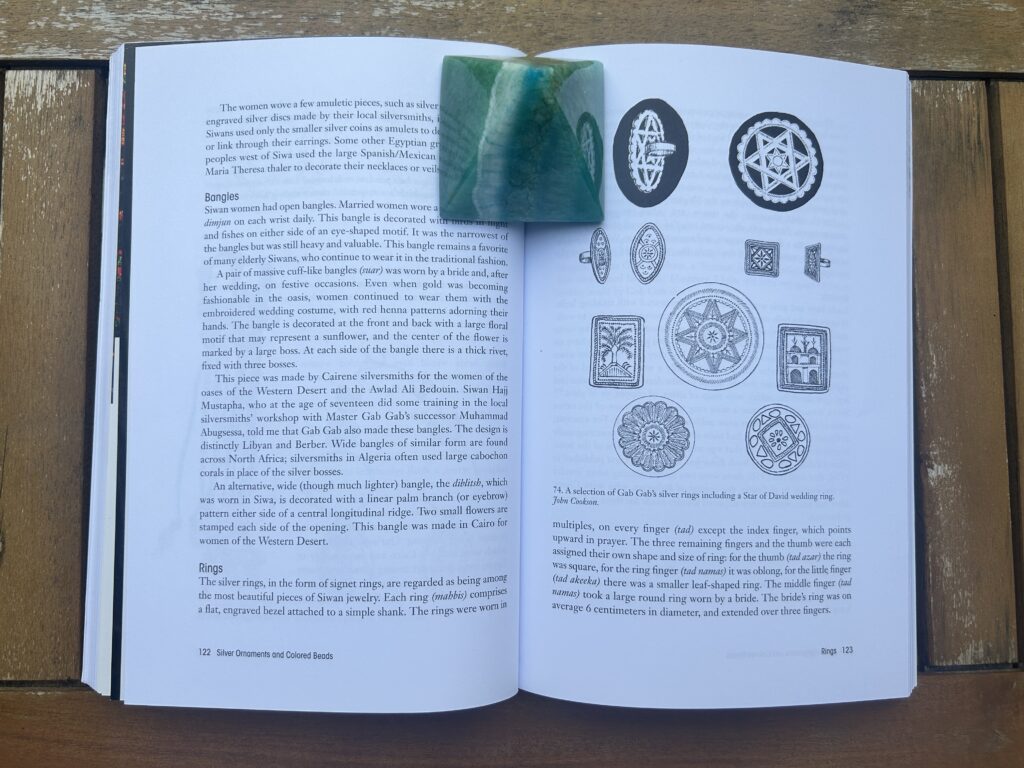 Vale's comprehensive study of Siwan history and culture shines through in her descriptions, particularly when she dissects the cultural significance of a Siwan woman's attire.
Vale's comprehensive study of Siwan history and culture shines through in her descriptions, particularly when she dissects the cultural significance of a Siwan woman's attire. 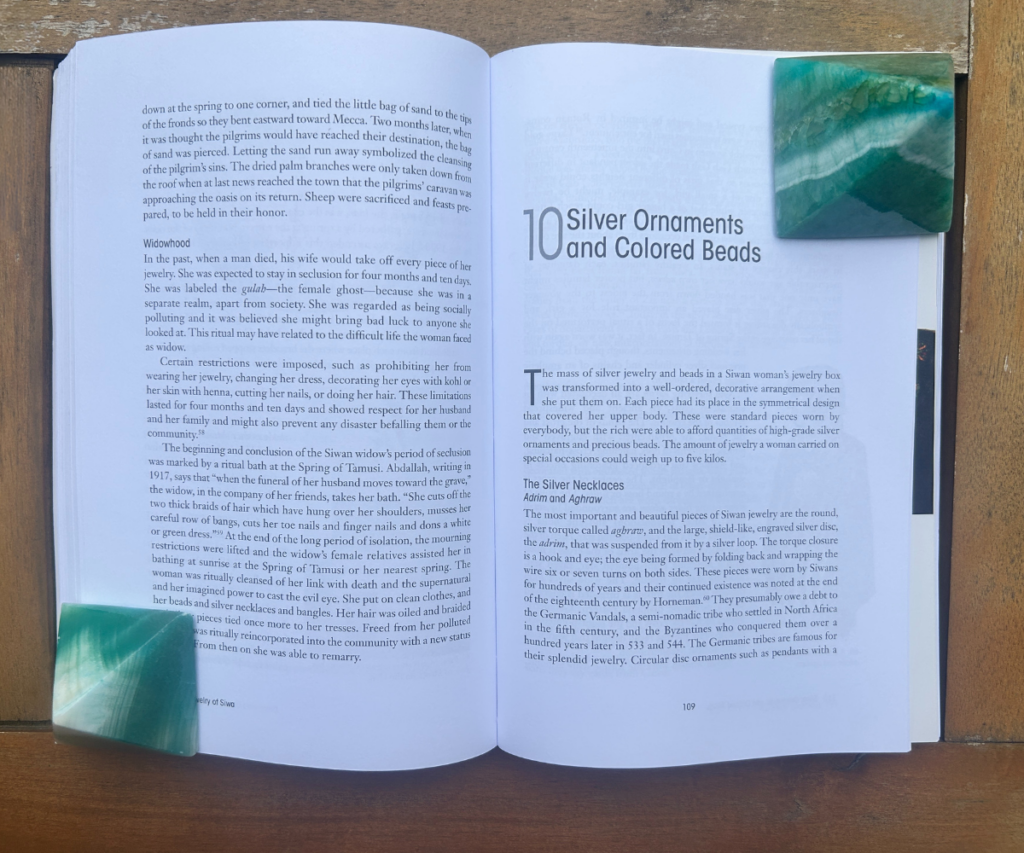 Similar to what Azza Fahmy noted in her book, “The Enchanting Jewelry of Egypt”, Vale believes that jewellery has always been important to the women of Siwa. She posits two reasons; the first is that jewellery embellishes the body and enhances looks, and the second is because jewellery is valuable. Some pieces of jewellery, Vale points out, have spiritual functions, protecting their wearer who for many centuries were isolated from modern medicine and surrounded by mysterious ancient Egyptian tombs, dark caves, and deep springs.
Similar to what Azza Fahmy noted in her book, “The Enchanting Jewelry of Egypt”, Vale believes that jewellery has always been important to the women of Siwa. She posits two reasons; the first is that jewellery embellishes the body and enhances looks, and the second is because jewellery is valuable. Some pieces of jewellery, Vale points out, have spiritual functions, protecting their wearer who for many centuries were isolated from modern medicine and surrounded by mysterious ancient Egyptian tombs, dark caves, and deep springs. 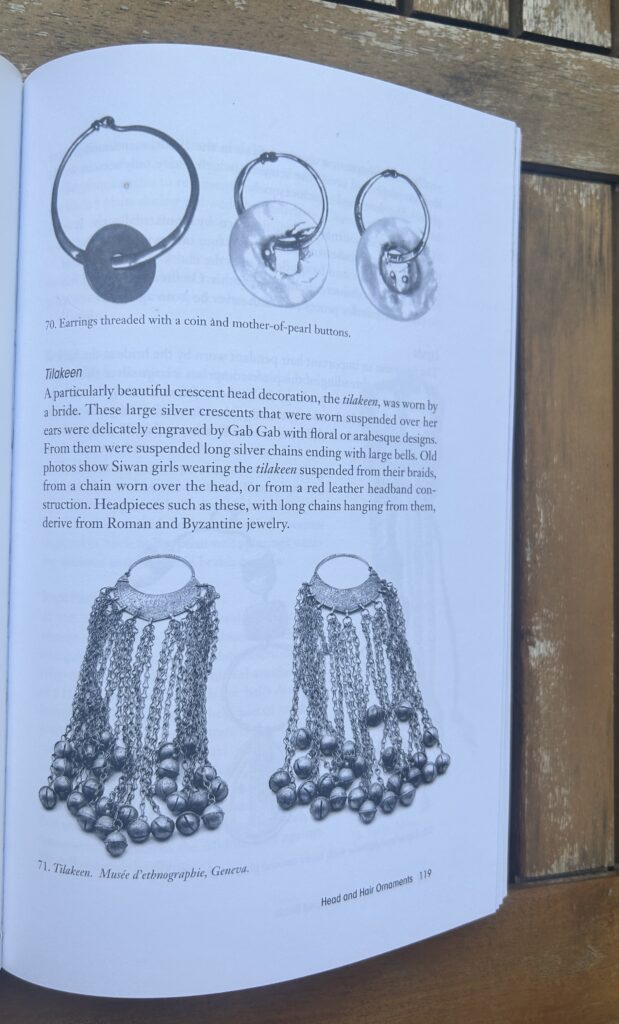 With silver reigning supreme for the longest time and produced by local artisans, Vale brings to light the stories of local artisans like Senoussi Daddoum Aani, known locally as “Gab Gab” before passing away in 1958, who was legendary in the Oasis for his silver creations and his engraving skills. His designs on pendants and ring bezels included motifs and patterns inspired by his surroundings in Siwa, such as the sun, moon and stars. Stories like this showcase what all of humanity has in common: creativity and connection to nature. Since the 1950s, however, more and more women have opted for machine-made gold, with some pieces continuing to be worn ceremonially for weddings and festivals. Some of the most distinctive pieces are pendant discs which reach the size of a saucer, torques, long chains that fall from necklaces and head ornaments, bosses, and plaques engraved with astral, floral, and vegetation patterns.
With silver reigning supreme for the longest time and produced by local artisans, Vale brings to light the stories of local artisans like Senoussi Daddoum Aani, known locally as “Gab Gab” before passing away in 1958, who was legendary in the Oasis for his silver creations and his engraving skills. His designs on pendants and ring bezels included motifs and patterns inspired by his surroundings in Siwa, such as the sun, moon and stars. Stories like this showcase what all of humanity has in common: creativity and connection to nature. Since the 1950s, however, more and more women have opted for machine-made gold, with some pieces continuing to be worn ceremonially for weddings and festivals. Some of the most distinctive pieces are pendant discs which reach the size of a saucer, torques, long chains that fall from necklaces and head ornaments, bosses, and plaques engraved with astral, floral, and vegetation patterns.  The book also documents weddings in detail. With a chapter dedicated to marriage costumes in the past and four chapters dedicated to wedding costumes, betrothal, trousseau and marriage payment, wedding preparations, and wedding ceremonies respectively. Vale provides insider insights into what she calls the most important and spectacular of ceremonies that marked the life of Siwan women. Festivities like weddings, Vale remarks, are when women, and the bride in particular, wear their finest clothing and jewellery as women wore more moderate sets of jewellery in their everyday lives. During the 7-day wedding celebrations in the Oasis, the wedding costumes steal the spotlight with their opulent and intricate designs. Vale elaborates on the fascinating evolution of these outfits, including the incorporation of European-style white wedding dresses for the opening day of the festivities.
The book also documents weddings in detail. With a chapter dedicated to marriage costumes in the past and four chapters dedicated to wedding costumes, betrothal, trousseau and marriage payment, wedding preparations, and wedding ceremonies respectively. Vale provides insider insights into what she calls the most important and spectacular of ceremonies that marked the life of Siwan women. Festivities like weddings, Vale remarks, are when women, and the bride in particular, wear their finest clothing and jewellery as women wore more moderate sets of jewellery in their everyday lives. During the 7-day wedding celebrations in the Oasis, the wedding costumes steal the spotlight with their opulent and intricate designs. Vale elaborates on the fascinating evolution of these outfits, including the incorporation of European-style white wedding dresses for the opening day of the festivities. 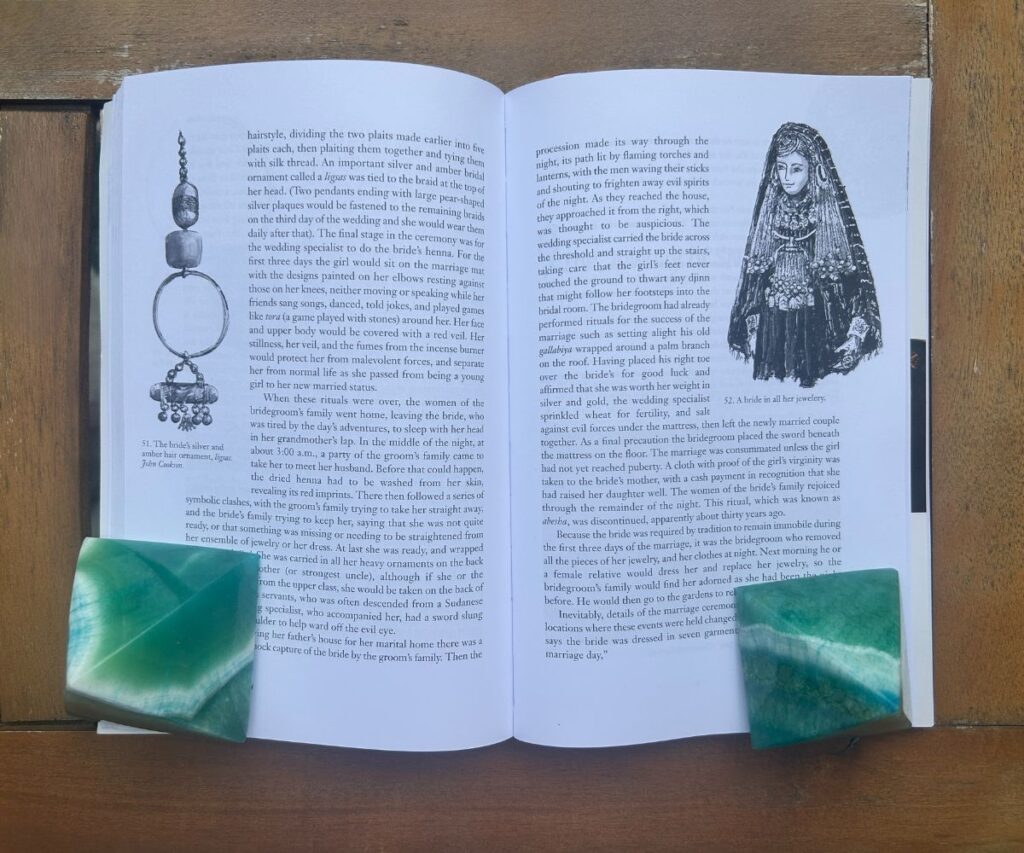 Vale documents the traditional costumes worn by the bride for her wedding ceremonies. These tunics are richly embroidered with mother-of-pearl buttons, cowrie shells, and silver charms. The mothers of the bride start the process by buying the black base fabric when their daughter is three or four years old. The mother also makes the tunic, with the embroidery and embellishments reflecting both her skill with needlework and her devotion to her daughter.
Vale documents the traditional costumes worn by the bride for her wedding ceremonies. These tunics are richly embroidered with mother-of-pearl buttons, cowrie shells, and silver charms. The mothers of the bride start the process by buying the black base fabric when their daughter is three or four years old. The mother also makes the tunic, with the embroidery and embellishments reflecting both her skill with needlework and her devotion to her daughter. 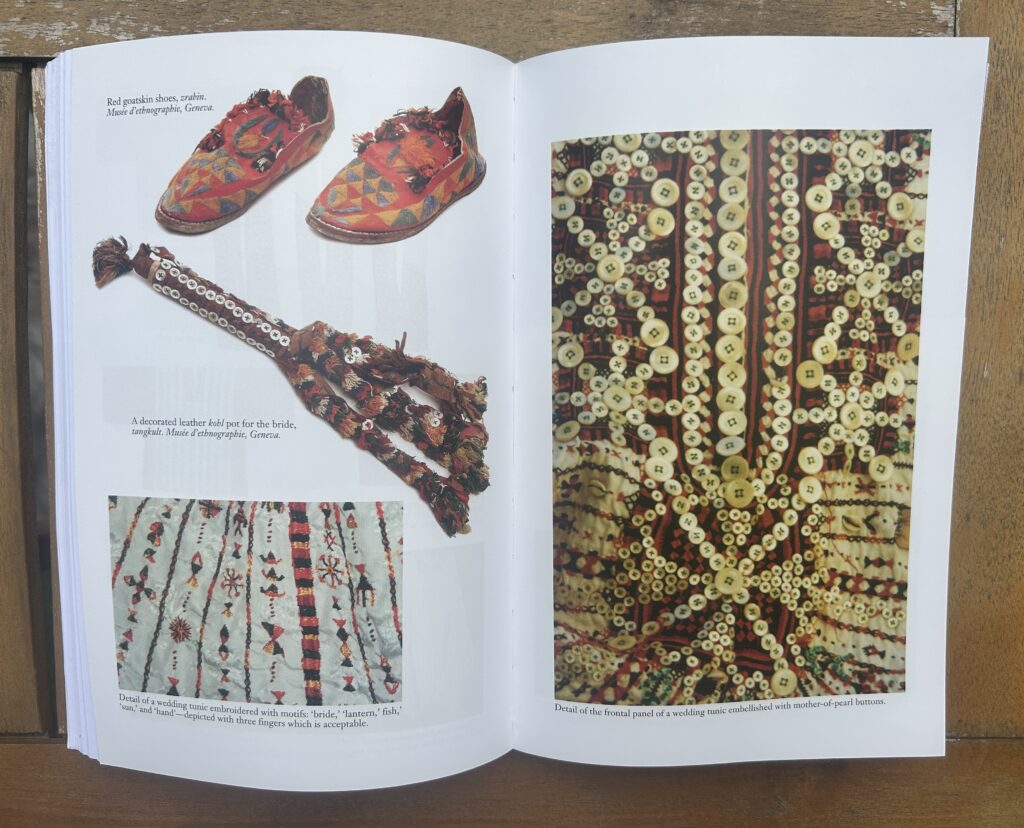 Costumes are admittedly the secondary focus of this book, but everyday and festival dress are documented in a dedicated chapter. In chapter 13, we learn about the standard T-shaped, long-sleeved tunic called “akbir_nwasa”. This tunic is typically made of cotton but could also be made of silk and has vertical green, red, orange, and black stripes. These tunics are embroidered with different motifs resembling lanterns (fanūs), buckets (gardal) and fish (tismikt) to name a few.
Costumes are admittedly the secondary focus of this book, but everyday and festival dress are documented in a dedicated chapter. In chapter 13, we learn about the standard T-shaped, long-sleeved tunic called “akbir_nwasa”. This tunic is typically made of cotton but could also be made of silk and has vertical green, red, orange, and black stripes. These tunics are embroidered with different motifs resembling lanterns (fanūs), buckets (gardal) and fish (tismikt) to name a few. 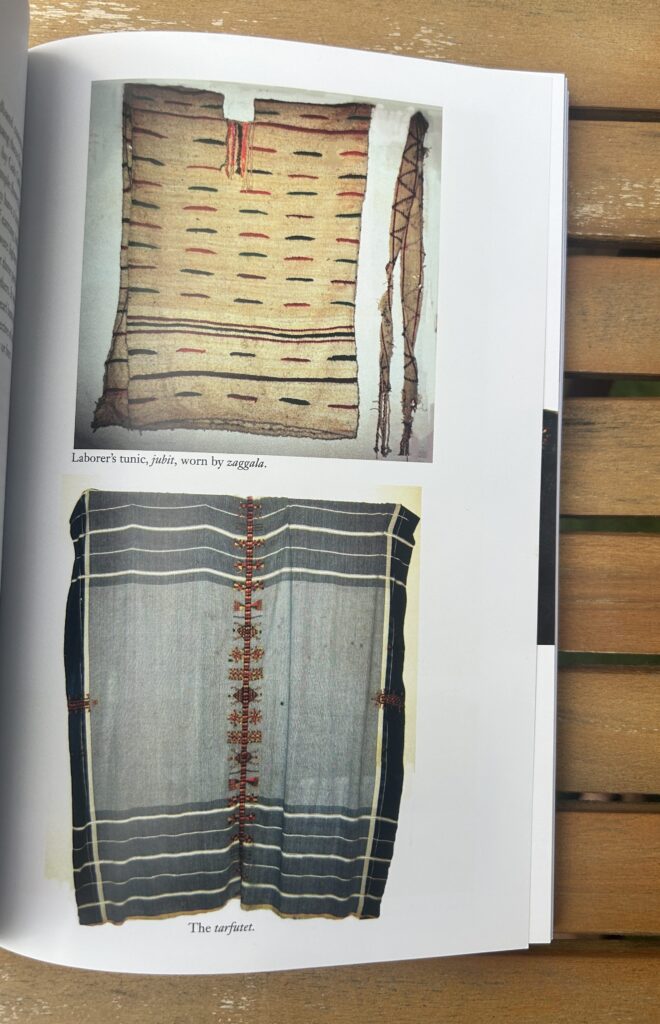 Although Siwa has evidently been secluded for the larger portion of history, Vale draws similarities in motifs, articles of dress, and jewellery between Siwa and other parts of North Africa such as Libya and Tunisia, demonstrating cultural exchange between communities of Berber origins.
Although Siwa has evidently been secluded for the larger portion of history, Vale draws similarities in motifs, articles of dress, and jewellery between Siwa and other parts of North Africa such as Libya and Tunisia, demonstrating cultural exchange between communities of Berber origins. 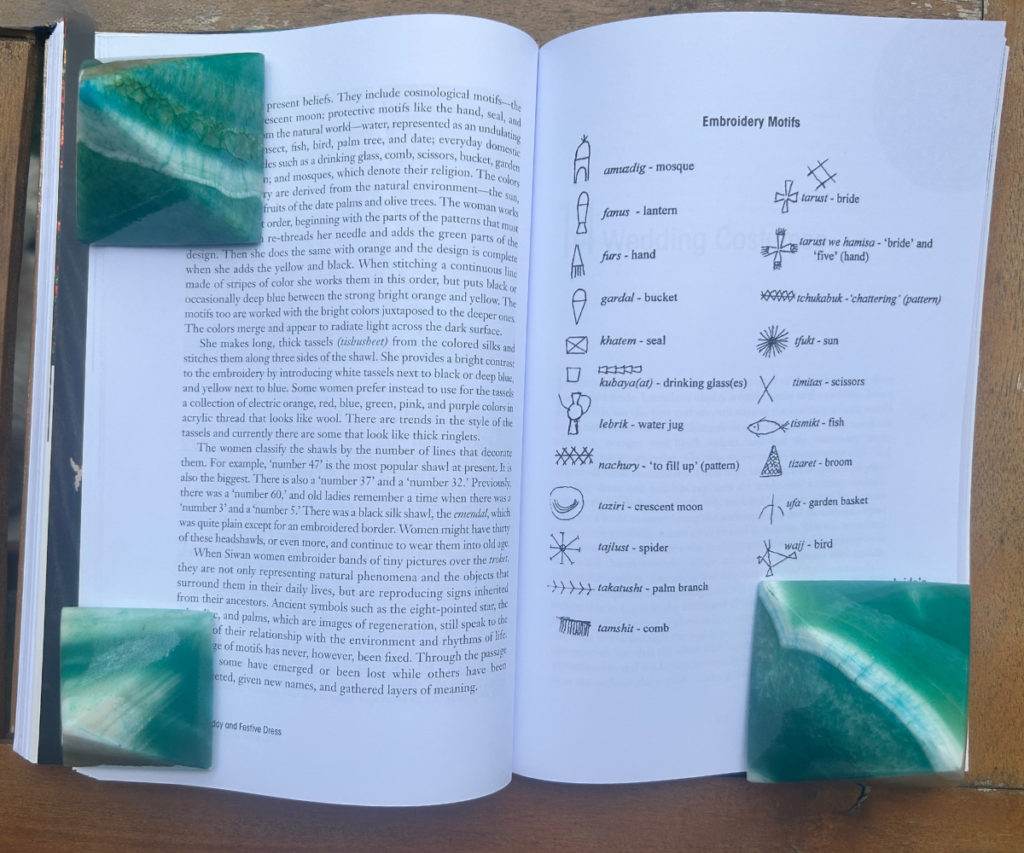 ‘Siwa: Jewelry, Costume, and Life in an Egyptian Oasis,’ is a great read for anyone interested in learning about life in Siwa. From agriculture to trade, crafts, dress and most importantly, jewellery, Vale provides an overview of the context and the culture of the Oasis where Alexander the Great was once declared Son of Amun. This allows us to further understand the colourful costumes that have inspired international designers such as Chloé. When it comes to jewellery, this book is a great source for information on specific pieces and influential craftsmen. While ‘The Enchanting Jewelry of Egypt’ offers a broad overview of Egyptian adornment, ‘Siwa: Jewelry, Costume, and Life in an Egyptian Oasis’ stands out in its detail-oriented approach, providing an in-depth exploration of Siwa's unique jewelry and costume traditions.
‘Siwa: Jewelry, Costume, and Life in an Egyptian Oasis,’ is a great read for anyone interested in learning about life in Siwa. From agriculture to trade, crafts, dress and most importantly, jewellery, Vale provides an overview of the context and the culture of the Oasis where Alexander the Great was once declared Son of Amun. This allows us to further understand the colourful costumes that have inspired international designers such as Chloé. When it comes to jewellery, this book is a great source for information on specific pieces and influential craftsmen. While ‘The Enchanting Jewelry of Egypt’ offers a broad overview of Egyptian adornment, ‘Siwa: Jewelry, Costume, and Life in an Egyptian Oasis’ stands out in its detail-oriented approach, providing an in-depth exploration of Siwa's unique jewelry and costume traditions. Format & layout:
- Paperpack
- 272 pages
- ISBN 13: 9789774166815
- English
Relevant objects from The Zay
Zay: (Arabic: costume, Pl. azyaā’), a set of clothes in a style typical of a particular country or historical period. Digital Archive:
Share




